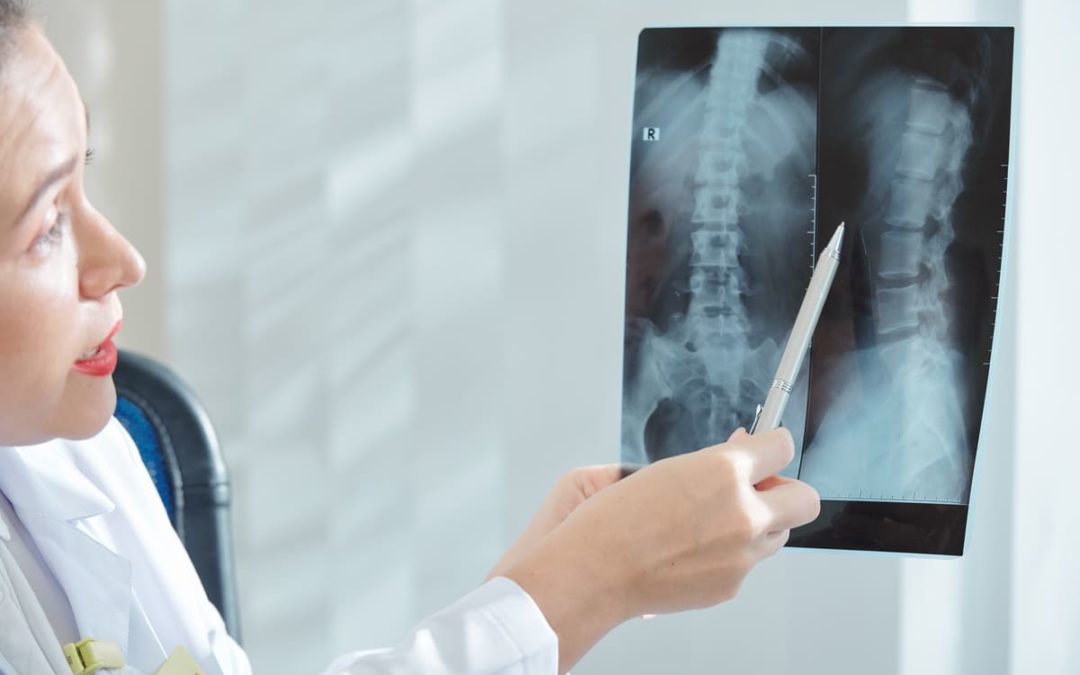Fractures can occur anywhere along the spine. Five to ten percent occur in the cervical (neck) region. 64% occur in the thoracolumbar (thorax/lower back) region, often at T12-L1.
Spinal fractures and dislocations can pinch, compress, and even tear the spinal cord. Treatment depends on the type of fracture and the degree of instability.
Depending on your general health and the type of trauma you’ve endured, different types of fractures are created. There are many different types of spinal fractures: Compression, Burst, Flexion-distraction, and Fracture-dislocation.
There are three common fracture patterns in the spine: flexion, extension and rotation. By identifying the fracture pattern, your doctor can determine the proper treatment.
Examples of the numerous classifications for fractures:
Compression Fracture: This fracture happens when the front part of the vertebrae breaks but the back part does not. Vertebral compression fractures are often the result of a fall, but people with osteoporosis tumors, and certain forms of cancer that can weaken bones, can suffer a fracture even when doing everyday things, such as reaching, twisting, coughing, and sneezing. A stable fracture can usually be healed through rest and bracing.
A wedge fracture is a subtype of compression fracture. Here, part of the vertebra—usually the anterior (front) part—collapses under pressure and becomes wedge shaped.
Burst Fractures are caused by severe trauma (such as a car accident or serious fall). They happen when the vertebra is crushed by extreme forces. In a burst fracture, the vertebra is fractured in multiple places. Because the vertebra is crushed completely, bony fragments can spread out and cause spinal cord injury. Burst fractures are more severe than compression fractures. These types of fractures are often surgically repaired.
Fracture-dislocations: If you’re in a car accident where your body is pushed forward, you may get a flexion-distraction fracture. This occurs when bone is broken, and the ligaments are torn. These fractures are usually unstable, tend to be very debilitating, and are often surgically repaired.
Fracture-dislocation: If you have any of the above fractures and the vertebra(e) moves significantly (dislocation), you have a fracture-dislocation. Usually, these fractures involve all three columns from the three-column concept, and they make your spine very unstable and cause spinal cord compression. They usually require stabilization surgery or a brace.
Your doctor may use other terms to describe a fracture. Here are some of the terms you will need to know:
Stable & Unstable Fractures
Stable fractures don’t cause spinal deformity or nerve problems. With a stable fracture, the spine can still function. Unstable fractures make it difficult for the spine to carry and distribute weight. Unstable fractures have a chance of progressing and causing further damage. They may also cause spinal deformity.
Major and Minor Fractures
Minor fracture means a part of the posterior (back side) elements of the vertebra has broken—parts of the spine that are not as important to spinal column stability. If you fracture this part of the vertebrae, it’s usually not too serious.
Major fracture means that part of the vertebral body, the pedicles, or the lamina have fractured. Fracturing the vertebral body is considered major because it helps carry so much weight and distributes the power of your movements. If they fracture, you may need surgery.
Disclaimer – All information is for educational pursuit and information purposes only. It is not intended nor implied to be a substitute for professional medical advice. The viewer should always consult his or her healthcare provider to determine the appropriateness of the information for their own situation or if they have any questions regarding their medical condition, diagnosis, procedures, treatment plan, or other health related topics.

